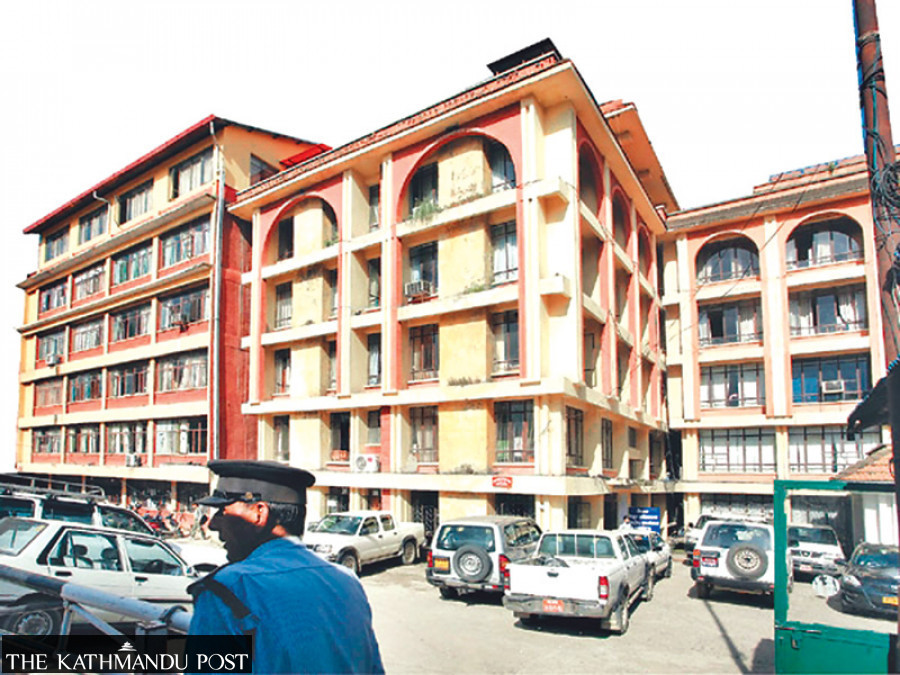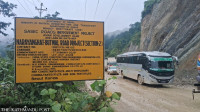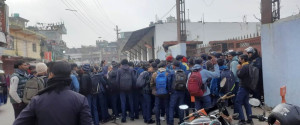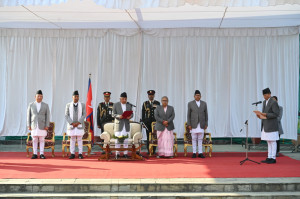National
Amid slump in power generation, NEA reduces supply to industrial sector
Power production by Nepal’s hydropower projects with combined capacity of 2200MW has declined by one-third.
Prithvi Man Shrestha
The Upper Tamakoshi Hydropower Project, the country’s largest power project with a capacity of 456 megawatts (MW), is currently producing just around 77MW of electricity.
This, according to the Nepal Electricity Authority (NEA), is due to the reduced water level in the Tamakoshi river with the country seeing no winter rainfall.
“Tamakoshi’s output of 77MW this winter is lower than last year,” said Suresh Bhattarai, spokesperson of NEA. As most of the hydropower projects of the country are run-of-the-river type, their power production also depends on water levels in the rivers.
They generate power to full capacity during the rainy season, but as the dry season starts and the water levels in rivers start decreasing, the generation also falls.
“Because of the drought situation, power production this year has decreased more compared to the period between late January and early February last year,” said Bhattarai.
Power generation in the Middle Marsyangdi Hydropower Project (70 MW) has also been less than last year. The average production since late January has slumped to 30.27 MW compared to 37.07 MW during the same time last year, according to Pawan Basnet, chief of the project. He blamed the prolonged dry spell as the major reason behind the reduced production.
Although the combined installed capacity of the country’s power projects is more than 2,200 MW, they are currently generating around a third of the total, according to the NEA. “Currently, the average production in the country stands at around 800 MW,” said Bhattarai.
The peak hour power demand in the country on Monday was 1,675 MW. Although the NEA has been importing power from India, they are in smaller instalments, which are not quite enough to meet the national demand.
During the wet season between late April and November, Nepal generates more power than its needs, but during the dry season, it partially imports electricity from India. Amid power shortage, the NEA has reduced supply to the industrial sector in the Tarai.
Subodh Kumar Gupta, president of Birgunj Chambers of Commerce and Industry, told the Post in late January that the NEA had been cutting power supply to factories in Birgunj by up to 7-8 hours a day.
“The NEA has not officially declared load-shedding and published a schedule, and this has made it difficult for factories to plan their production,” Gupta said. The Bara-Parsa industrial corridor, where Birgunj lies, is one of the key industrial corridors of the country.
“Due to prolonged power cuts, our cost of production has gone up,” Gupta said, adding that "the management of staff in line with the power availability too has emerged as a challenge.”
NEA’s Bhattarai admitted that they have reduced power supply to their industrial customers. “The Morang-Sunsari industrial corridor is currently seeing power cuts for up to two hours a day, while Birgunj and Bhairahawa area factories are witnessing cuts up to five hours daily,” said Bhattarai. “We have requested them not to use electricity during the peak hours.”
Due to a lack of high capacity transmission lines in the country, the NEA has not been able to supply power to Birgunj and Bhairahawa areas even after importing power via the Dhalkebar-Muzaffarpur transmission line, according to the NEA.
Currently, the NEA has been importing 90 MW from Bihar through Raxaul and Ramnagar areas and the imported electricity is supplied to consumers, including factories in and around Birgunj.
Amid complaints of shortage, the NEA has asked the Bihar state government to provide extra power through Raxaul and Ramnagar areas.
“We have sent a request to the Bihar government for the supply of an additional 90 MW,” Bhattarai told the Post in late January. He, however, said there has been no improvement in supplies from India.
Although the state government has agreed in principle to supply additional power, it would still be a challenge to bring in so much power through the existing single-circuit cross-border line, said Bhattarai.
Despite the ongoing shortages, the NEA this year has not been operating the country’s only reservoir-based 60 MW Kulekhani project to its full capacity.
“We are generating an average of 300-megawatt hours of power in a day, which is normal at this time of the year,” said Dhirendra Chaudhary, chief of the Kulekhani 1 Project. “Water levels in the reservoir was at 1,522.67 metres on Sunday, compared to 1,523 metres on the same day last year.”
Nepal's overall power production decreases further from late February to mid-April, according to the NEA.
“So, we will have to wait for the power supply to ease until the water levels in the rivers increase with the melting of snow in the Himalayas,” said Bhattarai.




 4.91°C Kathmandu
4.91°C Kathmandu







%20(1).jpg&w=300&height=200)






